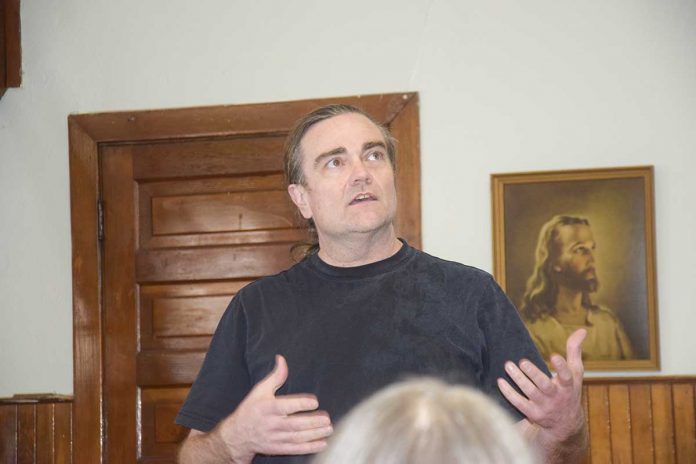Closes borders to non-citizens
UPDATED ARTCILE AVAILABLE HERE!
CANADA – A person could be forgiven for likening Canada’s responses to the global COVID-19 novel coronavirus outbreak to an avalanche since the World Health Organization officially declared a pandemic on March 11, two days after Canada listed its first COVID-19-linked fatality. On Monday, Prime Minister Justin Trudeau announced that the country would be closing its borders to all non-citizens except those from the US (with whom the nation is inextricably entwined)—media reports suggest that the US and Canada are working on an even more restrictive border, with limits on non-essential travel except commerce.
“As the virus has continued to spread, we are taking increasingly aggressive steps to keep you and your family safe,” he said, as he addressed the nation from the steps of Rideau Cottage in Ottawa. “I know that these measures are far-reaching,” said the prime minister. “They are exceptional circumstances calling for exceptional measures.”
On Tuesday, March 17 Premier Doug Ford declared an emergency, activating sweeping powers to order a wide range of closures and other restrictions aimed at limiting the spread of the virus.
As a result, the following establishments are required to close immediately:
all bars and restaurants, except to the extent that such facilities provide takeout and food delivery; all facilities providing indoor recreational programs; all public libraries; all private schools; all licensed child care centres; all movie cinemas; all theatres, including those offering live performances of music, dance and other art forms; and all concert venues.
All organized public events of over 50 people are also prohibited, including parades and events and communal services within places of worship. These orders were approved by the Lieutenant Governor in Council and will remain in place until March 31, at which point they will be reassessed and considered for extension, unless this order is terminated earlier.
Many of the federal restrictions are to take effect today (Wednesday, March 18) but the prime minister added that exceptions would be made for air crews, diplomats, immediate family members of Canadian citizens and US citizens. Prime Minister Trudeau said that air operators will be formally empowered to ban anyone who is showing symptoms of the virus from getting on a plane. The government will set up a support program to assist asymptomatic Canadians seeking to return home. “Our government will not leave you unsupported,” he assured those abroad.
“Let me be clear: If you’re abroad, it’s time for you to come home,” he said. But once home, it is clear that travellers must still isolate themselves for 14 days.
The government is also restricting overseas flights to just four airports: Pearson International Airport in Toronto, Vancouver International Airport, Montréal-Pierre Elliott Trudeau International Airport and Calgary International Airport and mandating airlines to screen passengers for symptoms of the virus before allowing anyone to board a plane.
The restrictions announced on Monday will not apply to commerce or trade.
The federal government has earmarked $1 billion as contingency for dealing with the COVID-19 fallout, including $500 million for the provincial health services’ warchests. Ontario has ponied up a $50 million fund. Economist suggest these financial commitments will likely increase over time as the battle to limit the impact on the economy heats up. Further contingency funds are being put in place as the scale of the pandemic increases.
Among the host of new precautions that have unfolded over the last few days are event cancellations (including sports such as the NHL, NBA and a host of concerts and other mass entertainment productions—even bingo), and enhanced school closures at all levels. All on a backdrop that includes an ever-escalating list of reported confirmed cases, including Prime Minister Trudeau’s wife Sophie Gregoire (the prime minister himself went into social isolation, working from home, but has since tested negative).
There is no question that this pandemic is being taken seriously, far more seriously and rapidly than the reactions to the swine flu, SARS and MERS before it.
The Canadian government has announced that the Public Health Agency of Canada “is working with provinces, territories and international partners, including the World Health Organization, to actively monitor the situation. Global efforts are focused on containment of the outbreak and the prevention of further spread.” (See ‘flattening the curve’)
According to the Canadian government’s COVID-19 website, the nation’s Chief Public Health Officer of Canada is in close contact with their provincial and territorial counterparts to “ensure that any cases of COVID-19 occurring in Canada continue to be rapidly identified and managed in order to protect the health of Canadians.”
At the national level, Canada’s National Microbiology Laboratory is performing diagnostic testing for the virus that causes COVID-19, working in close collaboration with provincial and territorial public health laboratories, which are now able to test for COVID-19.
There were 771 confirmed cases listed on the national COVID-19 website (although that website cautions that its numbers lag behind those of provincial and territorial websites and advise those seeking more accurate information to consult those sources) and according to media reports all provinces have now reported cases within their borders. As of Monday, none of the territories have confirmed a case.
The Government of Canada is advising Canadians to avoid non-essential travel outside of Canada until further notice.
Canadians abroad are urged to register with the Registration of Canadians Abroad service.
Canadians abroad in need of emergency consular assistance can call Global Affairs Canada’s 24/7 Emergency Watch and Response Centre in Ottawa at 1-613-996-8885 (collect calls are accepted where available) or emailsos@international.gc.ca.
The federal government has announced a $1 billion COVID-19 Response Fund that will go towards support for employers and workers through the Work-Sharing program and are waiving the one-week waiting period for Employment Insurance sickness benefits.
“No employer should feel like they have to lay off a worker because of the virus, and no one should have to worry about their job if they have to be quarantined,” notes a report on the TradeCommissioner.gc.ca site.
Closer to home, there are two confirmed cases in Sudbury, neither of whom are listed as having been locally infected. One case involved a man who had attended a large mining conference and the second is a woman in her 60s who was in close contact with the first case.
“While this is unfortunate, it is not unexpected. This person was a close contact of the first confirmed COVID-19 case in our area,” said Dr. Penny Sutcliffe in a release Monday morning. “The individual has followed the directions of Public Health and remains in self-isolation at home where she has been isolated since being tested at the Health Sciences North emergency department on Wednesday, March 11.”
The press release goes on to note that at this time that there is no evidence that the virus is circulating locally. However, the release states that “this is a rapidly changing situation requiring that our agency, community and individuals be prepared to prevent spread. Public Health Sudbury and Districts is closely monitoring the situation as it evolves at the local, provincial, and federal levels and will routinely communicate information and what it means for our community.”
“While everyone’s concerns about their health and safety is top of mind, the last thing we need is anyone worrying about job security as the COVID-19 situation evolves,” said Ontario Premier Doug Ford in an address taking place at the same time as the scheduled announcement by the prime minister. “That’s why I directed the minister of Labour, Training and Skills Development to draft legislation that will protect workers and their families during this difficult period.”
“We are facing rough waters ahead,” said Premier Ford, as he noted that Ontario Finance Minister Monte Kwinter would be announcing economic measures to protect Ontario workers.
“Mothers and fathers who need to care for children or dependants shouldn’t have to worry about losing their job,” said Monte McNaughton, Minister of Labour, Training and Skills Development. “The same goes for people who receive medical or public health advice and are required to take precautions as a result. They shouldn’t have to worry about losing their job. In this time of uncertainty, we need to support employees who must isolate or quarantine themselves, or who need to care for a loved one.”
The minister went on to assure Ontarians that the province would work to ensure that everyone received all of the federal support they are entitled to.
Across Ontario, as of press time Monday, there were 10,178 patients approved for testing of which 8,464 showed negative results, 1,537 cases are currently under investigation and 172 have been confirmed as positive, while five are listed as resolved.





